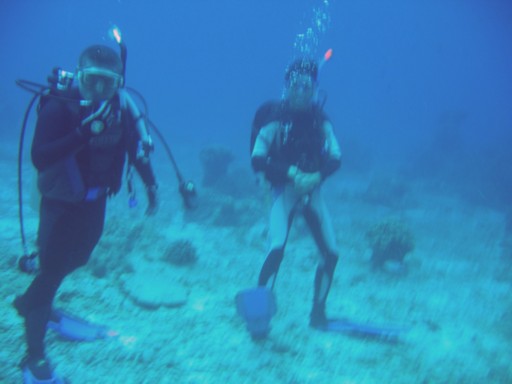
INTRODUCTION
Scuba is an acronym for
'self-contained 
underwater breathing apparatus'.
Scuba originally began with military and commercial applications, where it is still employed. However, its widest use, in terms of number of participants, is recreational. Recreational scuba today is like other any other sport that requires specialized equipment and training.
The usual equipment used in recreational diving include the mask, snorkel, fins, buoyancy control device (BCD), air tank, pressure/depth gauge, compass, watch and regulator. Also important are the wet or dry suit, depending on the temperature or the water body conditions, helps protect the diver from the cold and sharp corals. Dive tables are charts that allow the diver to conservatively judge how much more diving he can safely do in a period of 24 hours. With modern advance technology, these charts are now integrated with depth and pressure gauges into gadgets called dive computers small enough to be worn on the wrist. Some even come with a clock and are can be fashionable enough to be worn as a watch.
Because recreational scuba is usually done at depths of 18 ft - 130ft, our bodies are subjected to high amounts of external pressure both from the atmosphere and the surrounding water body. Pressure increases at a rate of one bar/ATM every 10m or 14.7psi every 33ft.

Due to these large amounts of pressure, the way our biological system handle gases, namely nitrogen, is largely changed. Examples of gas and pressure related aliments are nitrogen narcosis, decompression sickness (DCS or the 'bends') and oxygen toxicity. This site will discuss the how they occur and why they pose a hazard to divers. The study of dive medicine also include other aspects such as barotruama, women and diving, physical health, ect. However, this site will only discuss the few more general but important ones - DCS, nitrogen narcosis, barotrauma and gas toxicity.
| Home |